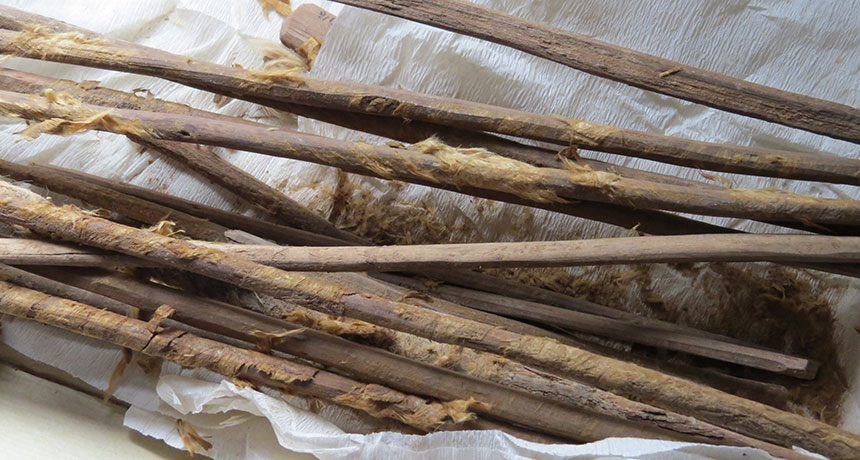Parasitic worm eggs found on Silk Road latrine artifacts
Find is first firm evidence disease carried along ancient trade route

DISEASE STICKS Microscopic evidence that long-distance travelers carried infectious diseases along Asia’s ancient Silk Road comes from cloth-capped sticks, such as these previously excavated at a 2,000-year-old latrine in north central China.
H.-Y. Yeh et al/Journal of Archaeological Science: Reports 2016